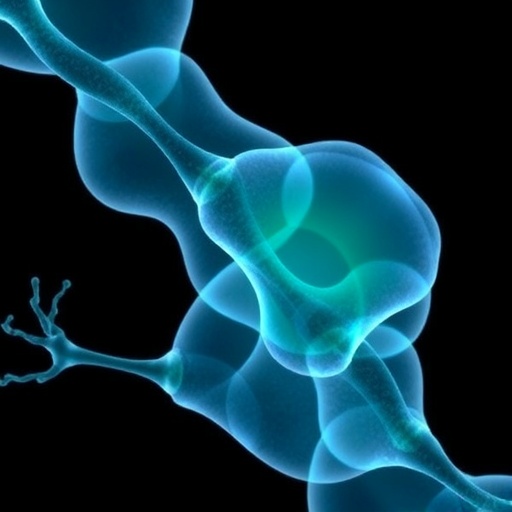In a groundbreaking study published in Nature Communications, researchers led by Wang, Cheng, Lim, and colleagues have uncovered critical insights into the role of EHMT2 in the regulation of genomic imprinting associated with Prader-Willi syndrome (PWS). This work, leveraging cutting-edge genomic and epigenetic techniques, elucidates a novel molecular pathway that underpins the pathological imprinting defects characteristic of this complex neurodevelopmental disorder. With the potential to precipitate transformative therapeutic strategies, these findings fundamentally reshape our understanding of imprinting regulation and its perturbation in genetic syndromes.
Prader-Willi syndrome is a rare but devastating disorder caused by the loss of expression of paternally inherited genes on chromosome 15q11-q13. Despite decades of research, the epigenetic mechanisms orchestrating this imprinting have remained incompletely understood. The present study focuses on EHMT2, a histone methyltransferase long recognized for its role in transcriptional repression through histone H3 lysine 9 dimethylation (H3K9me2). The authors provide compelling evidence that EHMT2 plays a pivotal role in establishing and maintaining the imprinting marks necessary to silence the maternal allele of the PWS critical region.
The research employed a combination of in vivo murine models, human induced pluripotent stem cells (iPSCs), and novel epigenomic profiling techniques including chromatin immunoprecipitation sequencing (ChIP-seq) and single-cell RNA sequencing. Through this multi-layered methodological approach, the investigators demonstrated that EHMT2’s enzymatic activity is essential not only during early embryogenesis but also in the maintenance of imprinting status throughout development. Notably, loss-of-function mutations or pharmacological inhibition of EHMT2 led to aberrant loss of imprinting, reactivation of maternally silenced alleles, and transcriptional dysregulation of key genes implicated in PWS pathology.
.adsslot_fsW26S3zGh{ width:728px !important; height:90px !important; }
@media (max-width:1199px) { .adsslot_fsW26S3zGh{ width:468px !important; height:60px !important; } }
@media (max-width:767px) { .adsslot_fsW26S3zGh{ width:320px !important; height:50px !important; } }
ADVERTISEMENT
Delving deeper into the mechanistic underpinnings, the study reveals that EHMT2 interacts with a constellation of chromatin-modifying complexes and non-coding RNAs localized to the PWS imprinting center (PWS-IC). This previously unappreciated interaction network serves to recruit and stabilize repressive histone marks, creating a chromatin environment refractory to transcription from the maternal allele. The intricate interplay between EHMT2 and these epigenetic modulators underscores the complexity of imprinting regulation and highlights potential nodes for therapeutic intervention.
Perhaps most striking is the discovery that EHMT2’s imprinting function is tightly regulated by developmental cues, including DNA methylation dynamics and long-range chromosomal interactions. The authors provide evidence from chromosome conformation capture assays suggesting that EHMT2 facilitates higher-order chromatin looping required to insulate imprinting control regions from activating transcription factors. This spatial reorganization ensures the fidelity of imprinting marks and proper gene dosage, dysfunction of which underlies the multisystemic symptoms observed in PWS individuals.
From a translational perspective, these findings shine a light on the potential for epigenetic therapies aimed at modulating EHMT2 activity to restore proper imprinting in affected cells. Notably, the authors explored small molecule inhibitors and genetic editing tools in cellular models, demonstrating partial rescue of imprinting defects upon precise recalibration of EHMT2-mediated chromatin states. While still preliminary, these results pave the way for innovative treatment approaches beyond symptomatic management currently available for Prader-Willi syndrome patients.
The broader implications of this study extend to other imprinting disorders and epigenetic diseases, where EHMT2 may serve as a master regulator linking chromatin architecture with gene dosage control. By providing a detailed molecular framework, the research invites a reevaluation of epigenetic interplay in the regulation of monoallelic gene expression, potentially informing diverse fields ranging from developmental biology to neuropsychiatric disorder research.
Moreover, the team’s integrative approach combining genetics, epigenomics, and cellular modeling exemplifies an emerging paradigm in biomedical research that harnesses multi-dimensional data to unravel complex gene regulatory networks. The insights gained from dissecting EHMT2’s role in PWS imprinting may also inform strategies for other imprinting syndromes, such as Angelman syndrome or Beckwith-Wiedemann syndrome, which share overlapping epigenetic dysregulation features.
In the context of neurodevelopment, the dysregulation of imprinting mediated by EHMT2 loss profoundly affects neuronal differentiation and synaptic function, as revealed by transcriptome profiling of EHMT2-deficient neural progenitors. These findings correlate with the neurobehavioral phenotypes observed in PWS, including cognitive impairment, hypotonia, and hyperphagia. The study thereby provides a critical link connecting molecular defects to clinical manifestations, enabling more targeted diagnostic and therapeutic efforts.
Beyond the biological insights, the study highlights important methodological advances in epigenetic research. The use of single-cell epigenomic sequencing allowed for the precise temporal and spatial mapping of EHMT2 activity during embryonic development, capturing heterogeneity in imprinting states that would be obscured in bulk analyses. This granular perspective is essential for understanding the stochastic nature of imprinting errors and their contribution to phenotypic variability.
The interplay between EHMT2 and non-coding RNAs at the PWS-IC adds another intriguing layer of regulation. The authors describe how specific long non-coding RNAs guide EHMT2 to target loci, orchestrating locus-specific chromatin modifications. This RNA-dependent targeting mechanism expands the functional repertoire of non-coding RNAs from passive bystanders to active participants in epigenetic gene silencing.
Crucially, the research team also investigated EHMT2 expression dynamics in patient-derived cells, confirming that aberrant EHMT2 function correlates with imprinting defects in human PWS samples. Such validation using clinically relevant material underscores the translational potential of their findings and supports the rationale for developing EHMT2-focused biomarkers and therapeutic agents.
This landmark study sets a new standard for our understanding of the epigenetic regulation of genomic imprinting in human disease. Through meticulous dissection of EHMT2’s function, it opens unexplored avenues for research and treatment of Prader-Willi syndrome and related imprinting disorders. As the field moves forward, targeting the epigenome with precision tools promises to unlock new possibilities for intervention where traditional genetic approaches have reached their limits.
In essence, the elucidation of EHMT2-mediated genomic imprinting mechanisms not only advances fundamental epigenetics but offers a beacon of hope for families affected by PWS. It exemplifies how integrated, interdisciplinary research can unravel the complexities of gene regulation and translate molecular knowledge into meaningful clinical impact.
Subject of Research: Epigenetic regulation of genomic imprinting by EHMT2 in Prader-Willi syndrome.
Article Title: Mechanism of EHMT2-mediated genomic imprinting associated with Prader-Willi syndrome.
Article References:
Wang, S.E., Cheng, Y., Lim, J. et al. Mechanism of EHMT2-mediated genomic imprinting associated with Prader-Willi syndrome.
Nat Commun 16, 6125 (2025). https://doi.org/10.1038/s41467-025-61156-8
Image Credits: AI Generated
Tags: chromatin immunoprecipitation sequencingEHMT2 and histone H3 lysine 9 dimethylationEHMT2 role in genomic imprintingepigenetic mechanisms in PWShistone methyltransferase functionimprinting defects in genetic syndromesmolecular pathways in Prader-Willi syndromepaternal gene expression lossPrader-Willi syndrome researchsingle-cell RNA sequencing techniquestranscriptional repression in neurodevelopmental disorderstransformative therapeutic strategies for PWS





